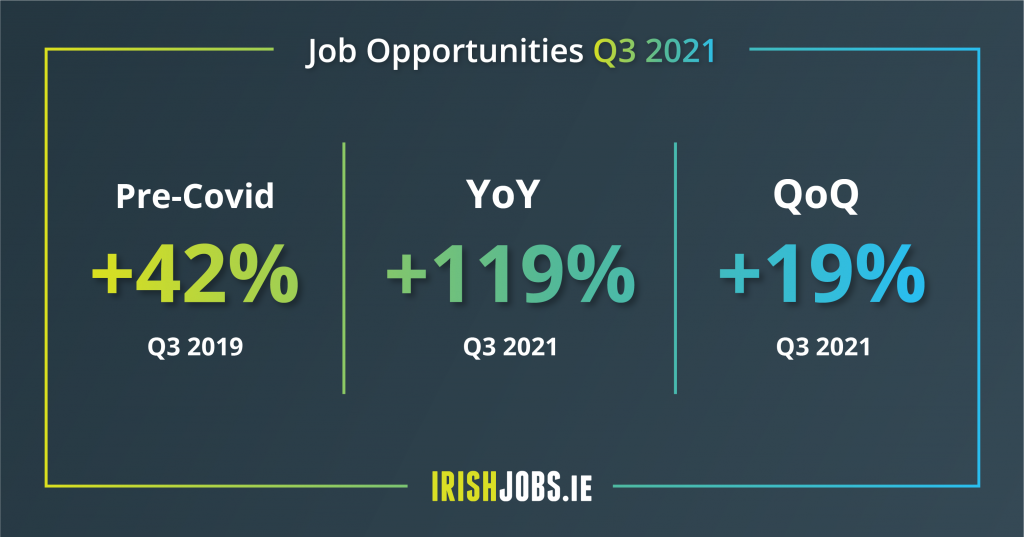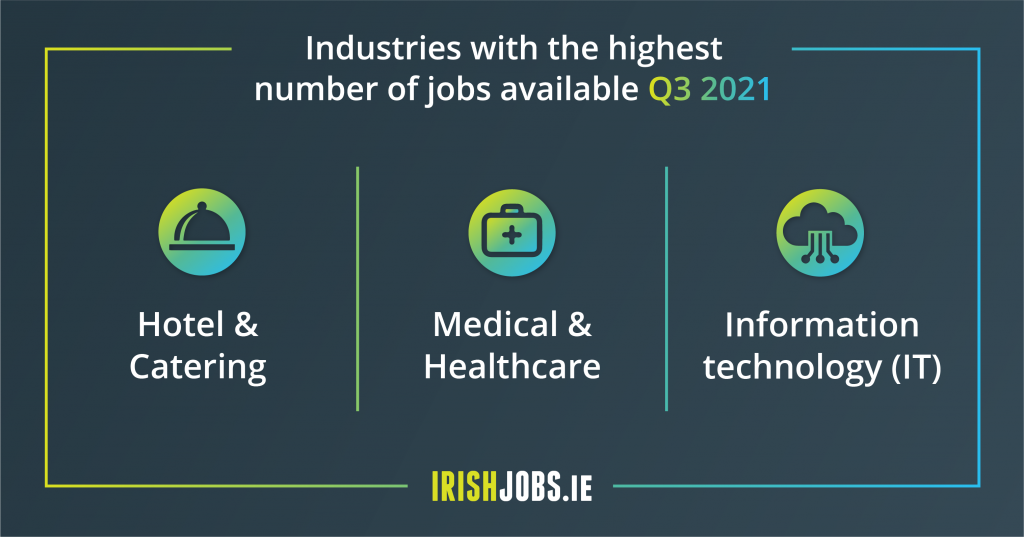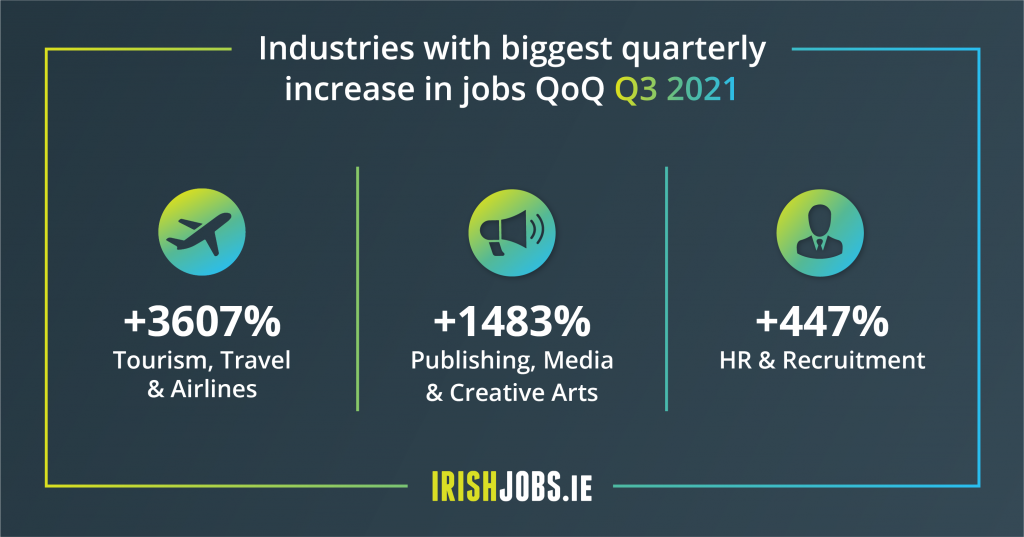Job vacancies in Ireland were +42% higher in Q3 2021 than the same period in pre-pandemic 2019, according to the latest IrishJobs.ie Jobs Index.
Job vacancies increased by +19% quarter-on quarter (building on an already strong +40% quarterly increase in Q2) and by +119% year-on-year.
Of the 30 sectors analysed by the IrishJobs.ie Jobs Index in Q3 2021, 24 posted quarterly increases in vacancy generation and 19 surpassed their pre-Covid rate.

“These figures are strong and ultimately good news for Irish employees and the economy. Far from experiencing a long-term deficit of jobs because of the pandemic, as many predicted, we actually have a huge number of vacancies nationwide,” said Orla Moran, General Manager of IrishJobs.ie.
“For employers, these trends are also mostly very positive, but finding staff to fill the sheer number of vacancies in a competitive talent market, where strong candidates can easily pick and choose roles and employers, will be a challenge.”
Sector breakdown

In tourism, travel, and airlines, a sector severely impacted by the pandemic and lockdown, vacancies increased by +80% quarter-on-quarter and +3,607% year-on-year.
Other sectors recorded large increases. Vacancies in construction, architecture, and property rose +25% quarter-on-quarter and +178% year-on-year, indicating continued forward momentum on building sites and other infrastructural projects.
Sales vacancies increased as well, by +25% quarter-on-quarter and +487% year-on-year, suggesting the lockdown has done little to reduce business and consumer demand for products and services.
Vacancies in science, pharmaceutical, and food dipped for the second successive quarter (-13%), though this likely represents descent from a peak of Covid-related product manufacturing rather than a deeper structural issue.
Some sectors have yet to return to their pre-Covid levels of vacancy generation, including hotel and catering, beauty, hair care, leisure, and sport, and production, manufacturing, and materials. Encouragingly, however, all three sectors posted quarterly and yearly increases in vacancies, suggesting that the potential for full recovery is there, provided current economic trends prevail.

Remote work and county increases
Fully remote work vacancies increased by +8% quarter-on-quarter. While positive, compared to the large vacancy rate increases for ‘physically present’ roles in other sectors, it suggests that employers believe the office still has an important role to play in the workplace ecosystem.
“The office is here to stay, but how employers and employees interact with will change. There is now a great deal of research and survey data that shows that most employees want some form of remote work incorporated into their role,” said Moran.
“The Government recognises this reality as well, and we welcome its continued support for remote work and remote work tax reliefs, as set out during the Minister for Finance’s Budget 2022 speech.”
All counties recorded a yearly rise in vacancies. Only two counties–Laois and Limerick–failed to register a quarterly rise in vacancies in Q3 2021, though their declines were modest (just -1% and -3%, respectively).
The five counties with major cities–Dublin, Cork, Limerick, Galway, and Waterford–accounted for 73% of all vacancies.
“It’s encouraging to see vacancy rises across Ireland, particularly in rural counties, but in some respects, the rise of remote work renders the geographical origins of a role less important. An employee can now live and work in Kerry or Tipperary for a Dublin-based company and only occasionally be required to be physically present in the office,’’ said Moran.
Re-evaluate and adapt
In light of the Central Bank of Ireland’s economic growth projections for 2022, a cautiously optimistic Budget, and a buoyant jobs market, Moran says there has never been a better time for an employee to look for a new role.
For recruiters challenged by current market conditions, there is some cause for optimism. Recent IrishJobs.ie research suggests that 55% of Irish employees plan to change role in the next twelve months.
“To stay competitive and attractive to new hires, all businesses, large and small, must continuously monitor the recruitment market for new employee trends and expectations. That will inevitably mean scrutinising, re-evaluating, and adapting existing employer brand strategy and recruitment processes.
“In such a competitive and, frankly, changed hiring market, no business can afford to do business as usual,” said Moran.
